Showing 73–84 of 129 results
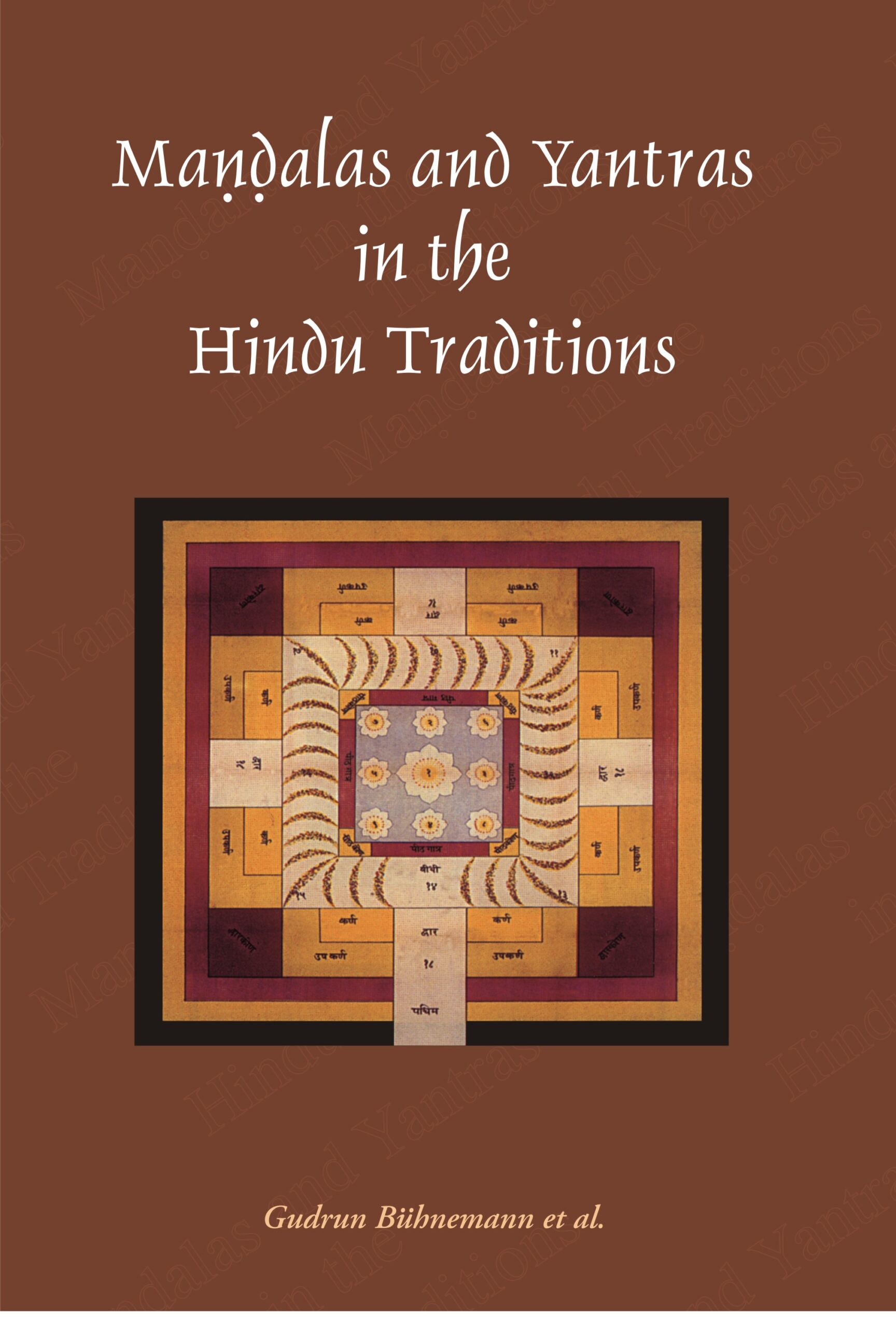
In recent years mandalas have attracted much interest and the main focus of such interest has been directed towards Tibetan mandalas. But mandalas are found across a wide spectrum of South Asian religious traditions as well including those of the Hindus and Jains. Hindu mandalas and yantras have hardly been researched. This book attempts to fill this gap.
Mandalas and Yantras are used in rites of worship in a wide range of Hindu, Buddhist and Jaina religious traditions. This volume has scholarly articles that deal with the little-researched subject of mandalas and yantras in specific Hindu traditions-Smarta, Pancaratra, Shaiva and Shakta traditions. The articles discuss mandala-like arrangements and the navagrahamandala in the ritual practices of Smarta Brahmins in Maharashtra. Use of mantras and yantras in the Vaishnava Pancaratra tradition is studied on the basis of passages from the Samhitas. They concentrate on the Siddhanta school, pre-11th century Shaiva Mandalas expressing the link between branches of Shaivism and between Shaiva and non-Shaiva groups, and description of use of mandalas in Abhinavaguptas Tantraloka. The shricakra is explored as a cosmic than a ritual diagram which has immense religious/spiritual significance. A slightly different attempt examines application of vastumandala, as described in Varahamihiras Brihatsamhita, in temple architecture. Parallels are drawn between the rituals taken up here and others like Buddhist tantric initiation rites. The writings consult many religious texts including the Sharadatilaka, the 11th-century Yoginihridaya and the Svacchandatantra to understand mandala structure and rituals. A highlight of the volume is the inclusion of numerous reproductions of mandala designs and other drawings and extensive notes. The volume will be useful for Indologists studying Hindu religious traditions, particularly mystical rituals and rites of Vaishnava, Shaiva and Shakta traditions.

In recent years mandalas have attracted much interest and the main focus of such interest has been directed towards Tibetan mandalas. But mandalas are found across a wide spectrum of South Asian religious traditions as well including those of the Hindus and Jains. Hindu mandalas and yantras have hardly been researched. This book attempts to fill this gap.
Mandalas and Yantras are used in rites of worship in a wide range of Hindu, Buddhist and Jaina religious traditions. This volume has scholarly articles that deal with the little-researched subject of mandalas and yantras in specific Hindu traditions-Smarta, Pancaratra, Shaiva and Shakta traditions. The articles discuss mandala-like arrangements and the navagrahamandala in the ritual practices of Smarta Brahmins in Maharashtra. Use of mantras and yantras in the Vaishnava Pancaratra tradition is studied on the basis of passages from the Samhitas. They concentrate on the Siddhanta school, pre-11th century Shaiva Mandalas expressing the link between branches of Shaivism and between Shaiva and non-Shaiva groups, and description of use of mandalas in Abhinavaguptas Tantraloka. The shricakra is explored as a cosmic than a ritual diagram which has immense religious/spiritual significance. A slightly different attempt examines application of vastumandala, as described in Varahamihiras Brihatsamhita, in temple architecture. Parallels are drawn between the rituals taken up here and others like Buddhist tantric initiation rites. The writings consult many religious texts including the Sharadatilaka, the 11th-century Yoginihridaya and the Svacchandatantra to understand mandala structure and rituals. A highlight of the volume is the inclusion of numerous reproductions of mandala designs and other drawings and extensive notes. The volume will be useful for Indologists studying Hindu religious traditions, particularly mystical rituals and rites of Vaishnava, Shaiva and Shakta traditions.
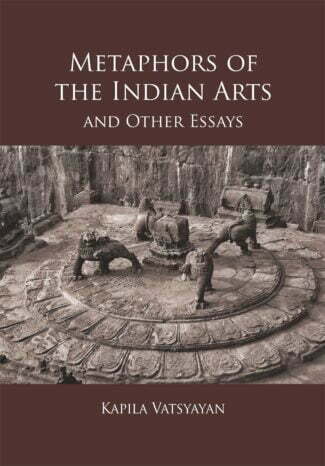
This anthology is a selection of writings of Dr Kapila Vatsyayans nearly four-decade long journey as an art critic and art historian. It reveals the distinct nature of Indian arts from the angle of the world-view in which they emerge. At the same time, it amply shows the theory of art and aesthetics which may enable us to to see the other traditions of art from our own window.
This anthology Metaphors of the Indian Arts and Other Essays is a selection of writings of Dr Kapila Vatsyayans nearly four-decade long journey as an art critic and art historian. It reveals the distinct nature of Indian arts from the angle of the world-view in which they emerge. At the same time, it amply shows the theory of art and aesthetics which may enable us to to see the other traditions of art from our own window. In a seminal article entitled Metaphors of the Indian Arts, the author identifies some fundamentals which permeate the Indian artistic traditions.
In the article entitled Mountain, Myth, Monuments Dr Vatsyayan discusses the significance of mountains and the sanctuaries, diversity of attitude and approaches to them in Indian context. She focuses on sacred mountains, especially Kailasa, which have dominated the Indian imagination for many millennia in the world of literature, architecture, sculpture, music and dance.
The attitude to the human body as also the self-consciousness of the relationship of the senses and the mind in diverse civilizations has been of special interest to the author for decades. In the article Early Evidence of Female Figures, Music and Dance, she points at essentials of treating the human body in Indian art, specially the female body, over a long span of history. She draws attention to the large measure of consensus on the identification of meaning of the particular or single image or relief, ranging from the examples from Mesopotamia to Assyria to Egypt and the figurines and statues of the Indus Valley, Mohenjo-Daro, Harappa and Mehergarh.
Further she returns to explicitly stating the ideational background of Indian aesthetics. Finally, she identifies certain motifs which have travelled across a vast geographical area, specially in South-East Asia.
Altogether, these essays will enable the reader to trace not only her journey but also her place in Indian art history as a carrier of a tradition of A.K. Coomaraswamy and Stella Kramrisch.
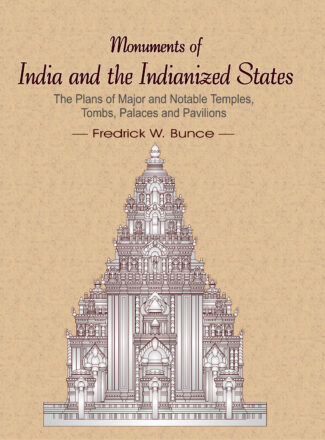
This volume presents the detailed diagrams of plans of over 380 of temples, tombs, palaces and pavilions found in the Indian subcontinent and the Indianised states of Java, the Khmer, Pagan, Thailand, Vietnam and Malaysia. The book also containing brief notes of each plan will be useful for scholars and students of Buddhist, Hindu and Islamic architecture with particular reference to South Asian and South-East Asian regions.
This volume presents the plans of temples, tombs, palaces and pavilions found in the Indian subcontinent and the Indianised states of Java, the Khmer, Pagan, Thailand, Vietnam and Malaysia. They contain detailed diagrams of plans of over 380 structures along with a brief note on each plan that covers the various segments/sections of each monument. The plans are precise and are presented along with their elevations which are proportional, i.e., depict major architectural forms and masses. The monuments covered, of the period third century bc to ce 1854, pertain to different regions of India and different periods and dynasties in Indian history. They include famous structures like the cave monasteries at Ajanta, Sanchi temples, Rajasthani temples, the Lal Qila and the Taj Mahal as well as other lesser-known buildings. Monuments of the Mughals, the Sultanate kings, the Lodis, Tughlaqs and Vijayanagar kings are among the Indian structures included. The book will be useful for scholars of Buddhist, Hindu and Islamic architecture with particular reference to South Asian and South-East Asian regions.
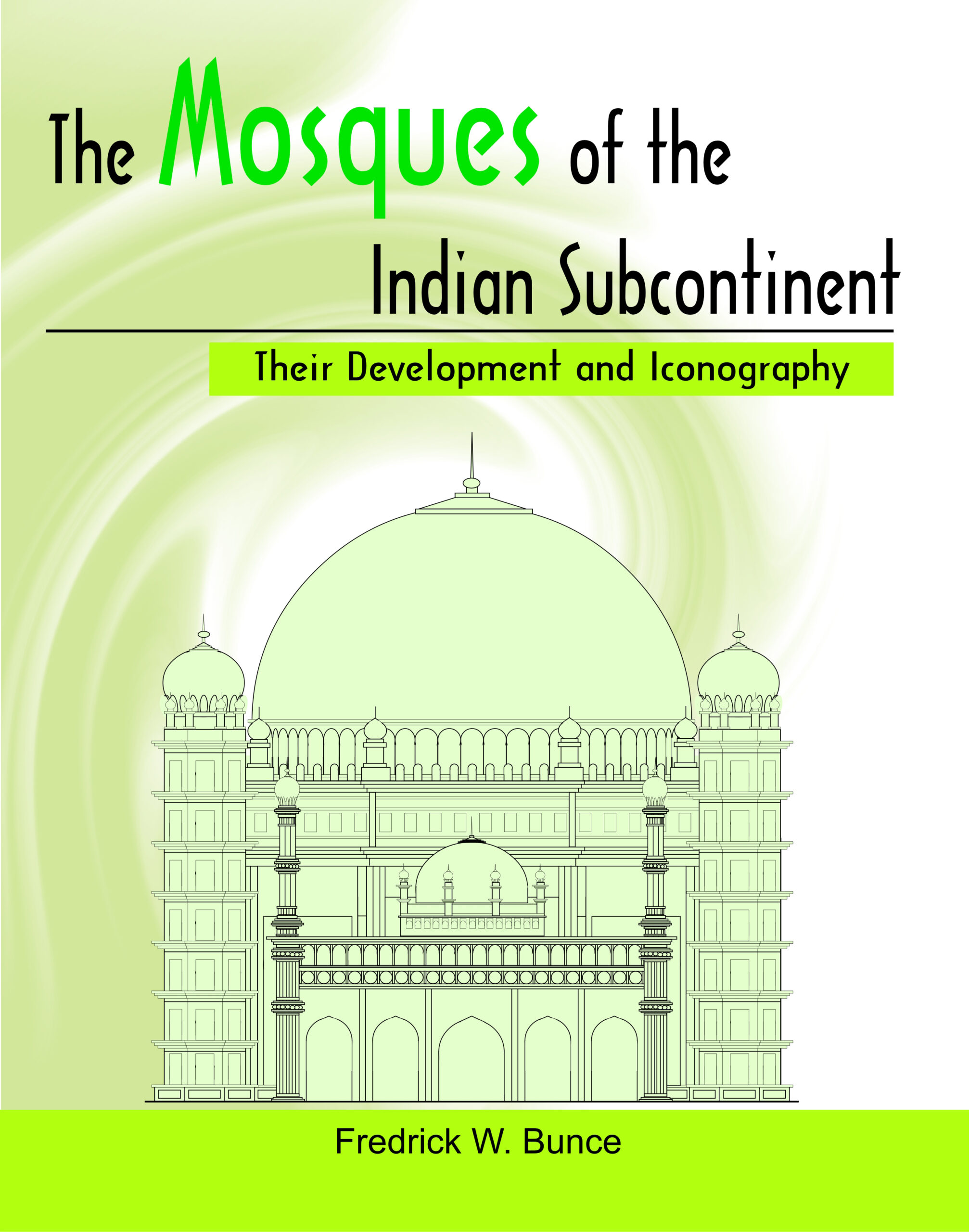
The Indian subcontinent is home to some spectacular mosques which are architectural marvels produced by the spread of Islam in India. 54 important mosques including their locations, history, structure and plan patterns, are covered in this volume which will be indispensable for scholars and students of Indo-Islamic architecture.
The spread of Islam in India produced some of the most spectacular monuments, the mosques stand as testimony to the great architectural skill and expertise of the Indian subcontinent through centuries and constitute one of the most important aspects of the rich architectural culture of the region. This volume showcases some 54 important mosques spread across the Indian subcontinent from Lahore in modern Pakistan to Gaur in modern West Bengal and from Delhi in the north to Kayalpatnam and Bijapur in South India. It mentions the location of the mosques, their history, structure and plan patterns and discusses various elements of the structures in detail: their entrances, pillars, porticoes, type of mihrab and other aspects. It emphasises the importance of a particular masjid such as its typifying the mosques of a certain period or dynasty and setting the standard for later masjids in some manner. It presents some other plans and proportional elevations in the appendices for a comparative study. An extremely useful list of Muslim rulers of the Indian subcontinent is provided. With maps and drawings of plans of mosques, the book is a painstaking effort to examine the evolution and iconography of the mosque architecture in the region. The volume will be indispensable for scholars and students of Indo-Islamic architecture.

This book is a dictionary of mudras in Hindu and Buddhist religious practices that lists various mudras and contains detailed and revealing notes about them. It scrutinizes the work done by a number of scholars to throw further light on the subject.
Mudras occupy an important place in Buddhist and Hindu religious practices as these signify special meanings, associated with specific divinities and rites, which cannot be represented any other way. This book is a dictionary of mudras in Hindu and Buddhist religious practices that lists the various mudras deity-centred, rite-centred, yogic-centred, and so on illustrating each with a simple drawing drawn generally from the perspective of one holding the mudra. It contains detailed notes that give numerous references to literary and other sources that reveal a lot about the mudras their descriptions in the texts, rites associated with the mudras in the texts as well as the varied interpretations of a number of mudras in the different texts. The book also has an introduction on Hindu and Buddhist mudras that goes into iconographic features associated with deities along with the technical descriptions and the subcategories and further divisions into which mudras are arranged. It scrutinises the work done by a number of scholars on the subject to throw further light on the subject. The volume will prove indispensable to all students and scholars who are engaged in study of Hindu and Buddhist religious traditions and practices.

The book studies INLAY art that developed in Mughal Architecture indigenously, from Humayun to Shah Jehan (c. 1535 to 1658 ad). Mughal inlay is architectural and to brand it pietra-dura, which was a florentine picture-art used on wooden furniture, is a misnomer. This book also reveals that Orpheus Plaques which led the colonial historians to Florence to trace the origin of Mughal inlay were imported ready-made and there is no other example of Florentine pietra-dura.
The book studies INLAY art as it developed in Mughal Architecture indigenously, from Humayun to Shah Jehan (c. 1535 to 1658 ad), landmark examples of which have been illustrated. Mughal inlay is architectural, and it is a misnomer to brand it: pietra-dura which was a florentine picture-art used on wooden furniture. Orpheus Plaques which led the colonial historians to trace origin of Mughal inlay to Florence, were imported ready-made and there is no other example of Florentine pietra-dura. Inlay is the most distinctive characteristic of Mughal Architecture and study of its growth and development, to the elegance of the Taj dados, the chef doeu-vre of Indian art, is historically as enlightening, as interesting it is artistically.

This book explores the rich history, architecture, and spiritual significance of Chidambaram, the sacred birthplace of Nataraja. With 150+ images, it delves into its artistic, philosophical, and mystical essence.
“Chidambaram is a place of great antiquity which has been revered as one of the holiest sites in India for millennia. It is widely recognised as the birth place of Nataraja – King of Dancers an iconic and highly recognisable form of divinity in the Indian culture and tradition. Beyond being a mere religious symbol the imagery of Nataraja contains many layers of deep and subtle meaning.
This book is an exploration of these concepts and offers a glimpse of the many facets of the Chidambaram temple. This publication has been carefully curated with passion and devotion and offers a visual and stimulating journey of Chidambaram through a selection of over 150 high quality pictures and art work. It also contains literary snippets, short narratives of its exotic history and architecture, along with intriguing scientific, philosophical and mystical interpretations of this legendary temple.
Whether you are an art aficionado or someone interested in history, mythology, or science and spirituality, there is something in this book for you.”
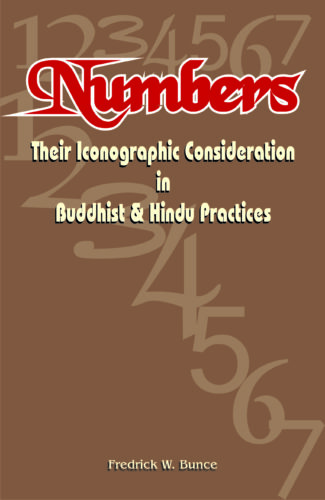
The book highlights the true iconographic import of numbers/ numerology in Hindu and Buddhist practices bringing out, in detail, the unique properties of each iconographically significant number: ranged between one (1) and one thousand and twenty four (1024).
In his effort to find an explanation for the unknown, the mysterious around him, the ancient man saw in numbers, among other things, a high significance. And frequently used them to explain the ineffable or even predict through numerology. Astrology became a parallel, interwoven science which, like numerology, was used to predict the future and also to determine propitious times for venturing upon an important activity: be it the naming of a child, marriage, or construction of a building. Numbers, in fact, have always held a strong fascination for all various cultures of Asia. Considered to inhere both mystic and iconic significance in the Hindu and Buddhist worlds, their importance was emphasized in celebrated architectural treatises, like the Manasara and the Mayamata and they, (together with other complex procedures), were invariably utilized by the priest-architect (the sthapati) in the planning, design and construction of temples and other buildings. Not only the numbers, but even the geometric forms (like the circle, square or rectangle) came to have numerological and, consequently, iconographic importance in these cultures. Yet another fascinating work from an internationally known scholar of Oriental Art, the book highlights the true iconograpic import of numbers/numerology in Hindu and Buddhist practices bringing out, in detail, the unique properties of each iconographically significant number: ranged between one (1) and one thousand twentyfour (1024). Professor Bunce here perceives numerology not as the arcane or occult science, but as an academic proposition concerned with the ethos of numbers and the genesis of their importance within the Hindu and Buddhist art, particularly architecture. A useful read for the scholars of iconography.
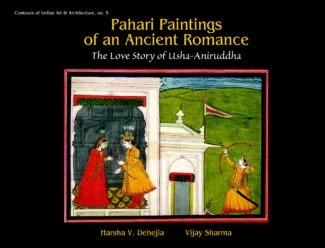
The book exhibits paintings which depict an ancient love story of India involving Krishnas grandson Aniruddha and Banasuras daughter Usha. Depiction of Garudas narration of the story to Krishna, Balarama and Pradyumna during their battle with Banasura, and the Pahari kalam of painter Ranjha create lyrical romantic scenes and gory battles with equal ease.
Among ancient love stories of India, that of Usha-Aniruddha has a pride of place. Being a part of various Puranas such as the Harivamsha, Bhagavata and Vishnu Puranas it acquires a sacrality and legitimacy. We are privy to the interaction of all the three gods, namely Vishnu, Shiva and Brahma. The highlight of the story is the romantic involvement of Krishsas grandson Aniruddha and Banasuras daughter Usha. Between scenes of a pitched battle between Banasura and Krishna, where a mighty demon and his army battle with Krishna, Balarama and Pradyumna and interspersed with long conversations with Garuda, the narrative takes us to tender scenes of romance as well as a birds-eye view of Shonitpur and Dvaraka. The Puranic narrative is brought alive by the graceful Pahari kalam of Ranjha, son of Nainsukh, who renders the story with finesse and precision and creates lyrical romantic scenes and gory battles with equal ease. The book brings together for the first time the entire series from the Bhuri Singh Museum of Chamba in Himachal Pradesh but also features folios from other museums and private collections as well as a critical look at the painter and the patron of this series. The book is a visual treat.

Matiram’s sonorous poetry embellished by Purkhu’s sensuous imagery, transport us into the rarefied realm of the Rasraj, where romance interwoven with poignancy, bring alive the emotion-laden shringara rasa. Both lyrics and imagery have been seemlessly sculpted into visual poetry.
No celebration of ritikavya can be complete until we have enjoyed the sonorous poetry of Matiram and the sensuous images of Purkhu.
With well sculpted words and lyrical rhythms Matiram takes us into the rarefied world of the nayak and the nayika, their amorous exchanges, the sensuality of loving glances, the charged moments of romantic feelings, the heart throb of belonging, the poignancy of longing and above all the fulfilment of desire.
Line by line and doha after doha, Matiram leads us into the emotionally charged world of shringararasa and for those of us who are chastened by harishringara we go from one level to another till we hear the flute of Krishna.
And when we find that these sonorous words of Matiram have been brought alive by none other than Purkhu and his school of painting under the patronage of Sansar Chand of Kangra our joy is doubled and Matiram’s words become visual poetry.
In the hands of Purkhu words become lines, emotions take on a colour and desire becomes palpable through the magic of his kalam.
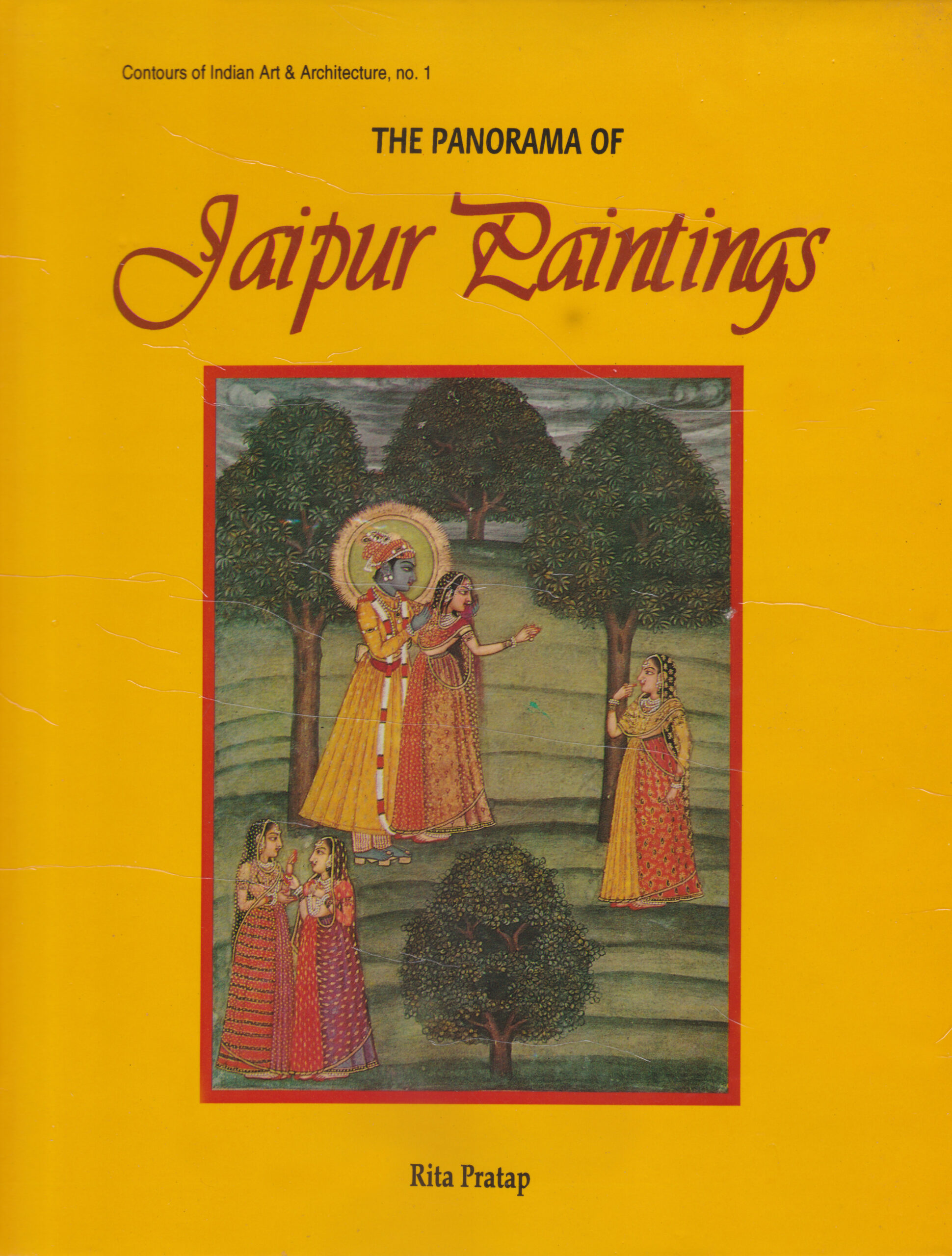
The book offers an exclusive study of the Jaipur School of Miniature Painting, in all its different articulations with focus on its historical evolution, style, form, motifs, artists and its linkages with other forms of creative expression.
Over the centuries, Indian art tradition came to have its differentiative regional, even local, specificities. For instance, the Jaipur School of Painting. Isolating itself from other Rajasthani genres like Mewar, Bikaner or Bundi, the Jaipur school set out its independent, distinctive identity, sometime during the early years of the 18th century. Historically, it was the time when the once-glorious Mughal empire was beginning to disintegrate and many of its court painters discovered, in Jaipur, a conducive haven under the generous patronage of Sawai Jai Singh (ad 1699-1743). As the capital of Rajasthan, the erstwhile Rajputana, Jaipur evokes memories of Rajput chivalry, and legendary romance. And it unmistakably represents the beautiful in art and the magnificent in architecture leave alone its fabulous cultural traditions. The School of Painting that thrived has here for over 150 years since Jai Singhs time, covers a whole diversity of themes: both sacred and secular, evolving a veritable panorama of contemporary life and culture. And yet collectively, notwithstanding their exposure to the earliest character of Mughal art, Jaipur miniatures are steeped in tradition drawing inspiration from Indian mythology, epical/classical literature, and folklore. For the first time, Dr. Rita Pratap offers an exclusive study of the Jaipur School of Miniature Painting, in all its different articulations with focus, among other aspects, on its historical evolution; its style, forms and motifs; its artists and ateliers; and its linkages with other forms of creative expression: literature, music, sculpture, dance. For her meticulous analysis she has drawn on the miniatures from private collections and museums around the world. Besides including bibliographic references and a glossary of non-English words, the book is embellished with representative specimens of Jaipur miniature paintings, exquisite figures and photographic reproductions in colour.
| There are no products |